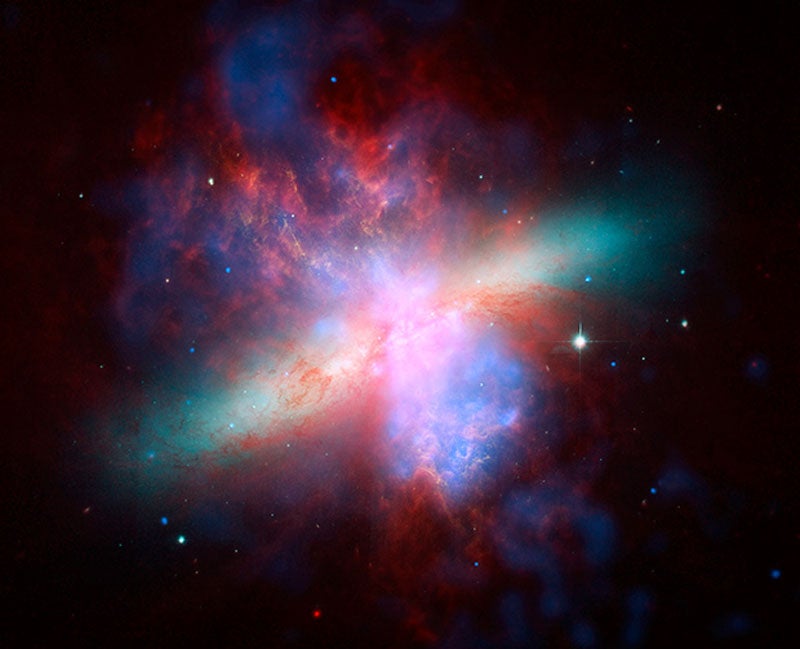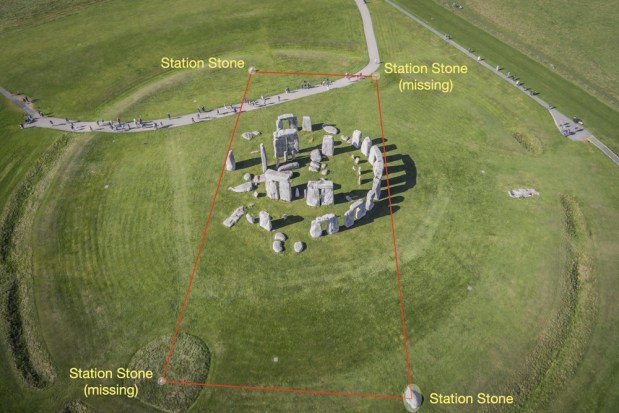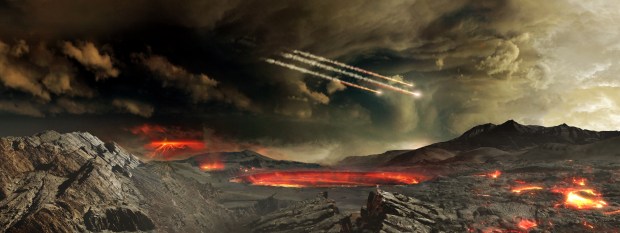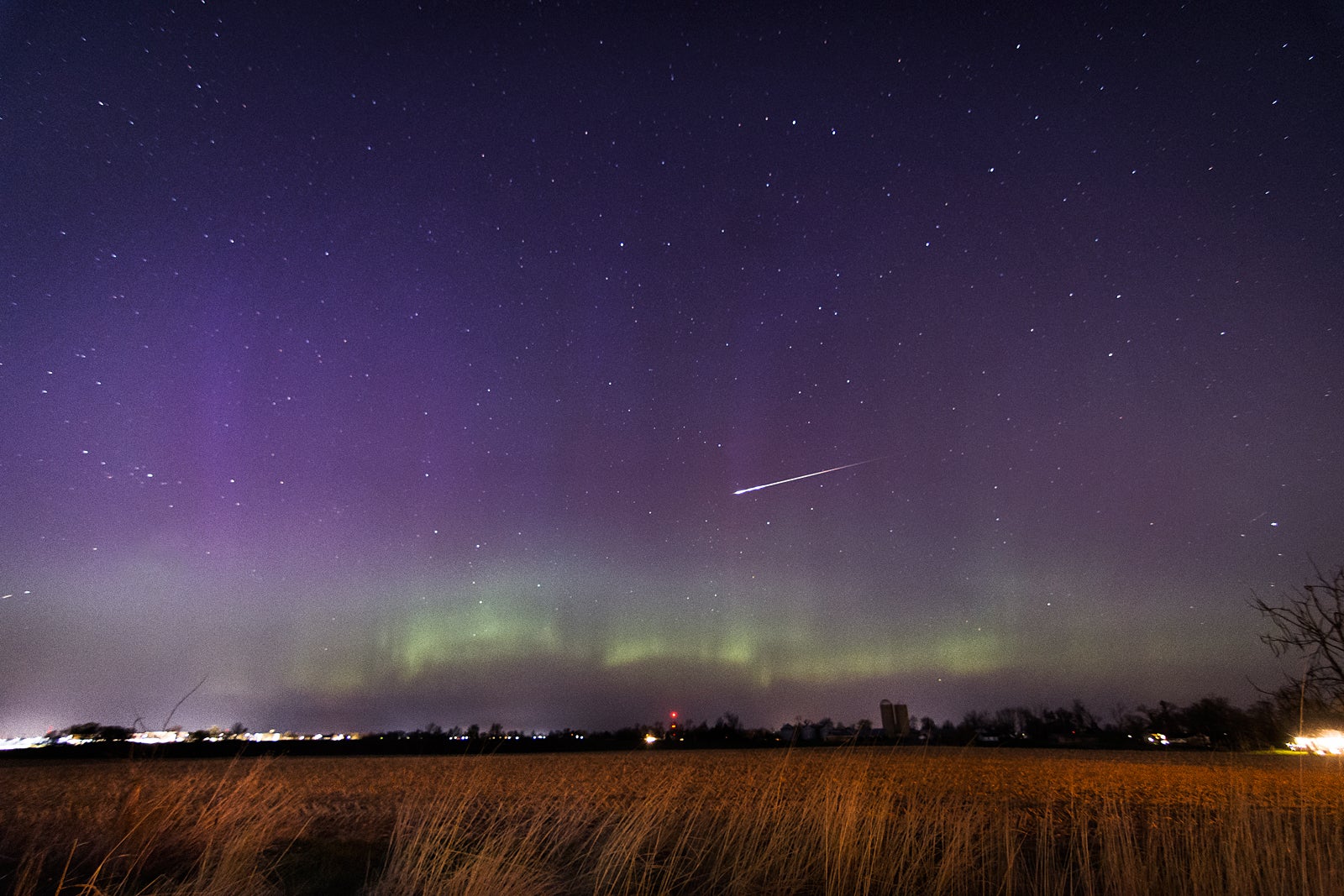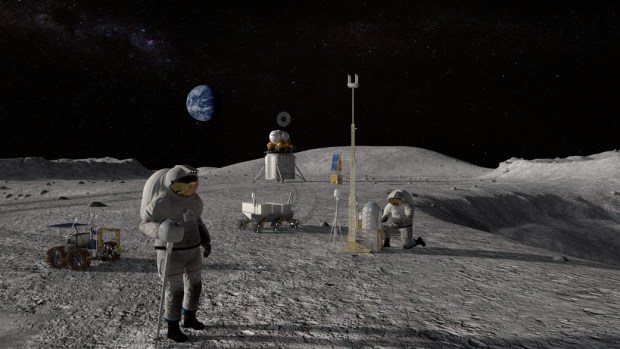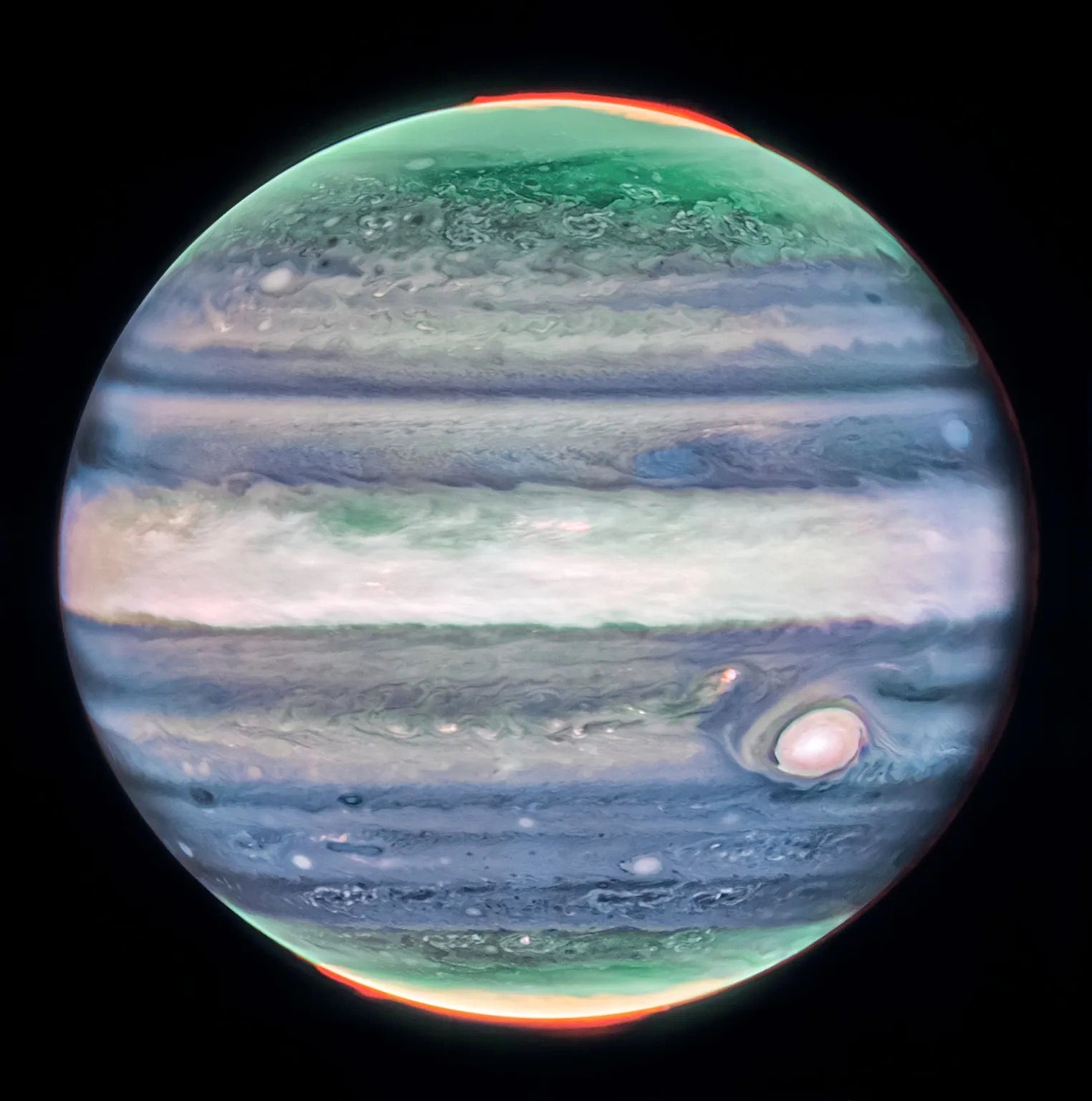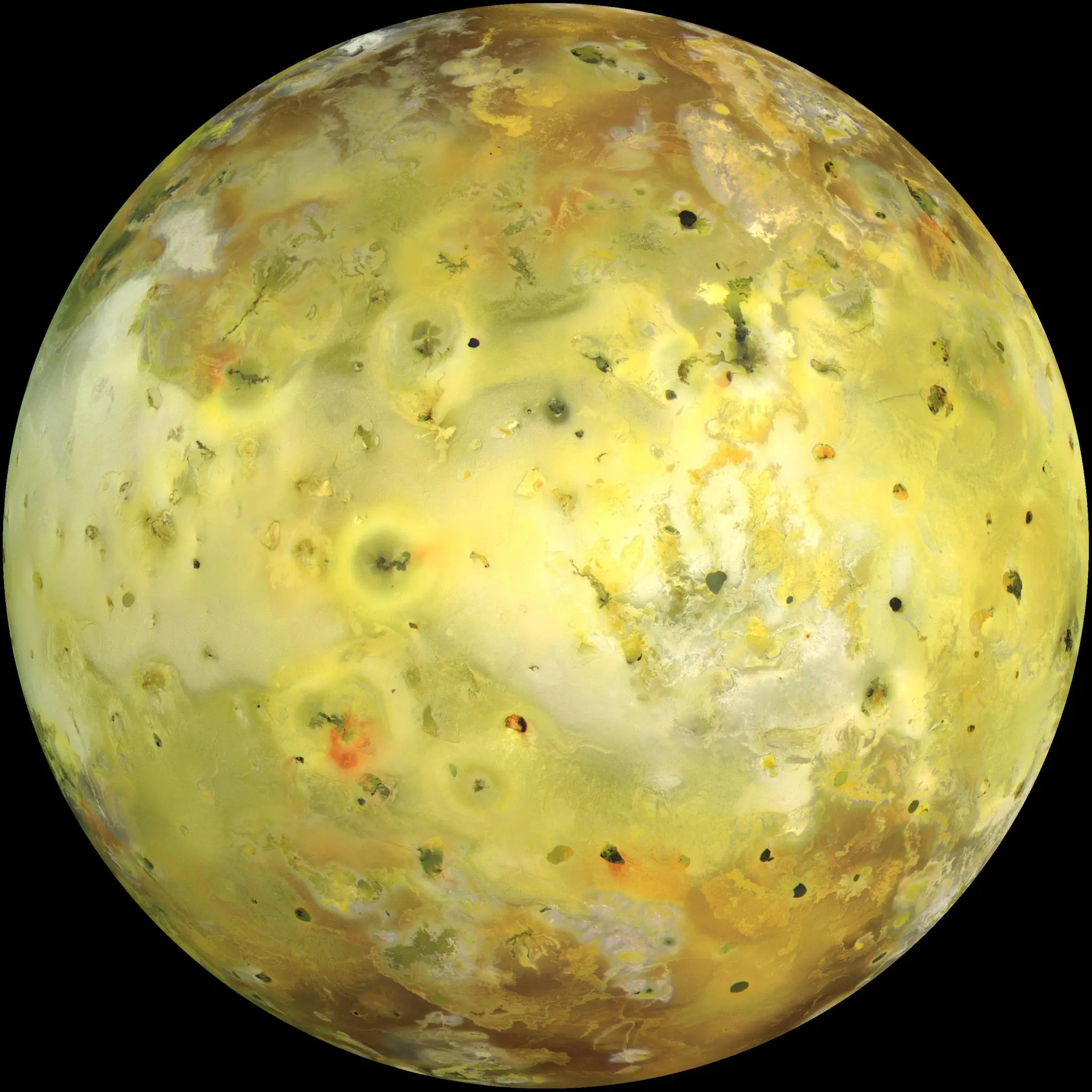Sifting through images and data from three telescopes, a team of astronomers found 29 objects with outflowing winds measuring up to 1,600 miles (2,500 kilometers) per second, an order of magnitude faster than most observed galactic winds.
“They’re nearly blowing themselves apart,” said Aleksandar Diamond-Stanic from the University of California’s Southern California Center for Galaxy Evolution. “Most galactic winds are more like fountains; the outflowing gas will fall back onto the galaxies. With the high-velocity winds, we’ve observed the outflowing gas will escape the galaxy and never return.”
The galaxies the astronomers observed are a few billion light-years away with outflowing winds of 300 to 1,600 miles (500 to 2,500 kilometers) per second. Initially they thought the winds might be coming from quasars, but a closer look revealed these winds emanate from entire galaxies.
Young, bright, and compact, these massive galaxies are in the midst of or just completing a period of star formation as intense as anyone has ever observed.
“These galactic-scale crazy-fast winds are probably driven by the really massive stars exploding and pushing out the gas around them,” said Alison Coil from the University of California, San Diego. “There’s just such a high density of those stars, it’s like all these bombs went off near each other at the same time. Each bomb evacuates the area around it, then the next can push gas out further until they’re evacuating gas on the scale of the whole galaxy.”
Galaxies with winds this fast are also quite rare, opening up the question of whether these are unusual events or part of a common phase in the evolution of massive galaxies that is seldom observed because it is so brief.
Astrophysicists still lack an explanation for how and why star-making ends. Theorists who model the evolution of galaxies often invoke supermassive black holes called active galactic nuclei, which can also generate savage winds, to explain how gas needed to form stars can be depleted.
These new observations demonstrate that black holes may not be necessary to account for how these kinds of galaxies run out of gas. “The winds seem to be powered by the starburst,” Diamond-Stanic said. “The central supermassive black hole is apparently just a spectator for these massive stellar fireworks.”

